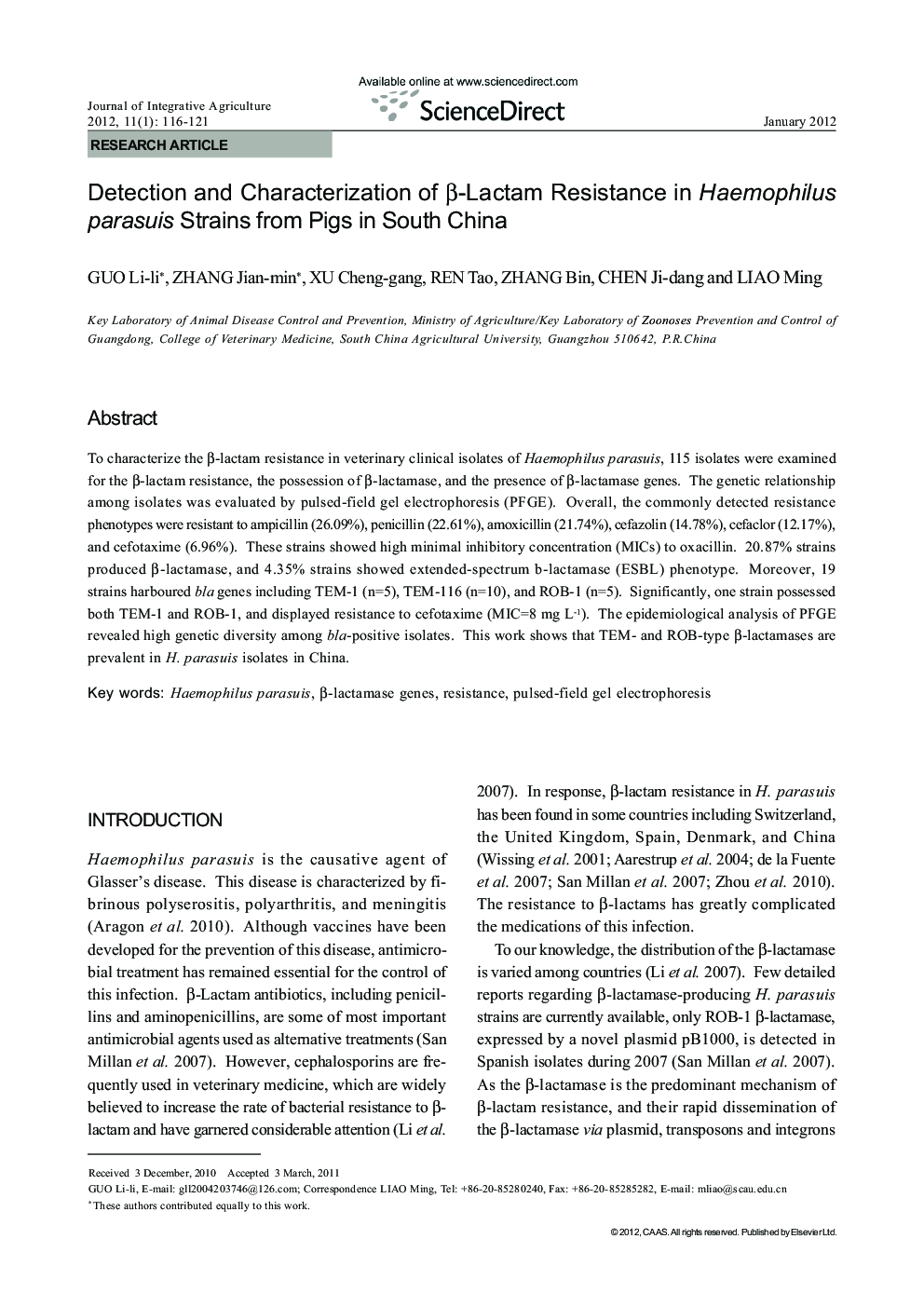| Article ID | Journal | Published Year | Pages | File Type |
|---|---|---|---|---|
| 4495220 | Journal of Integrative Agriculture | 2012 | 6 Pages |
To characterize the ?-lactam resistance in veterinary clinical isolates of Haemophilus parasuis, 115 isolates were examined for the ?-lactam resistance, the possession of ?-lactamase, and the presence of ?-lactamase genes. The genetic relationship among isolates was evaluated by pulsed-field gel electrophoresis (PFGE). Overall, the commonly detected resistance phenotypes were resistant to ampicillin (26.09%), penicillin (22.61%), amoxicillin (21.74%), cefazolin (14.78%), cefaclor (12.17%), and cefotaxime (6.96%). These strains showed high minimal inhibitory concentration (MICs) to oxacillin. 20.87% strains produced ?-lactamase, and 4.35% strains showed extended-spectrum b-lactamase (ESBL) phenotype. Moreover, 19 strains harboured bla genes including TEM-1 (n=5), TEM-116 (n=10), and ROB-1 (n=5). Significantly, one strain possessed both TEM-1 and ROB-1, and displayed resistance to cefotaxime (MIC=8 mg L-1). The epidemiological analysis of PFGE revealed high genetic diversity among bla-positive isolates. This work shows that TEM- and ROB-type ?-lactamases are prevalent in H. parasuis isolates in China.
